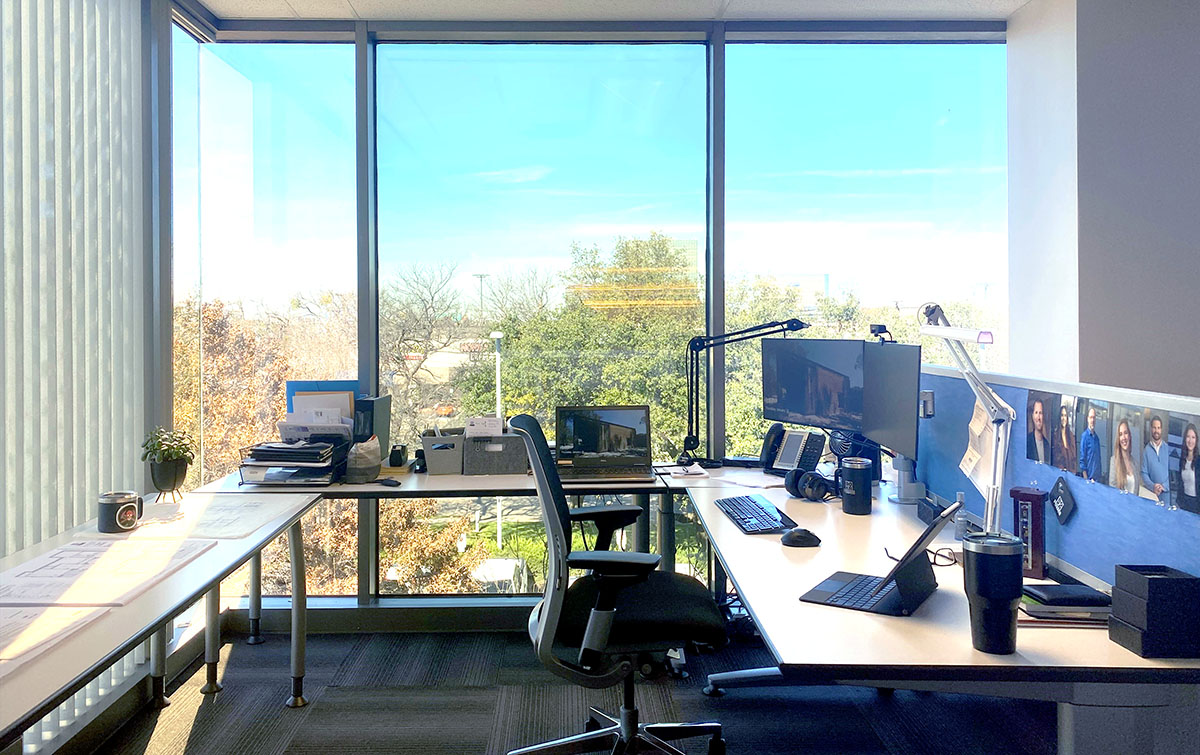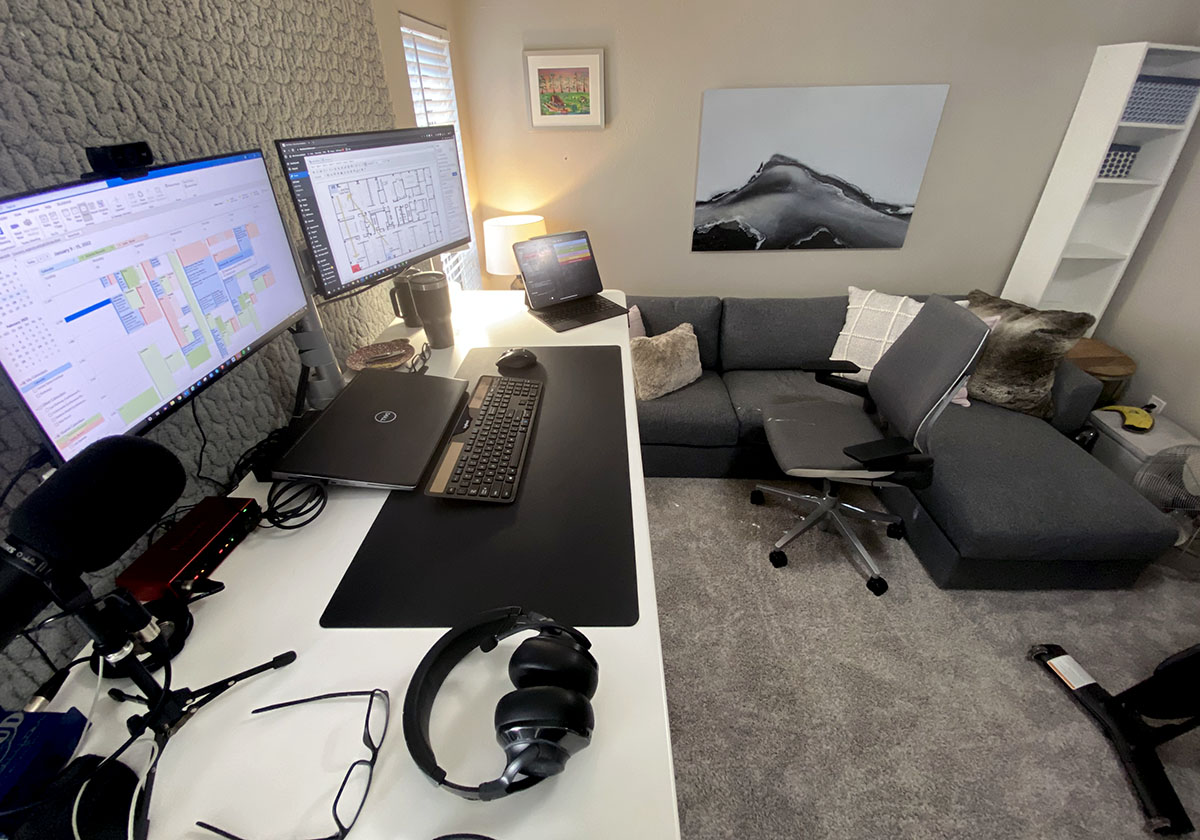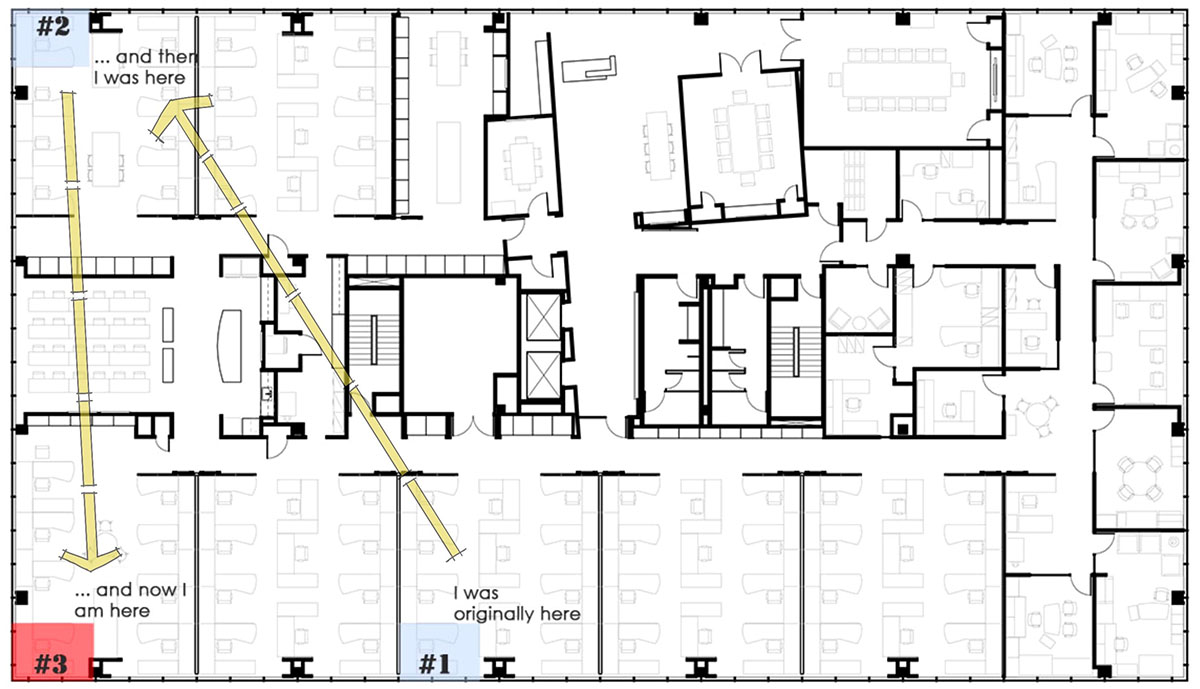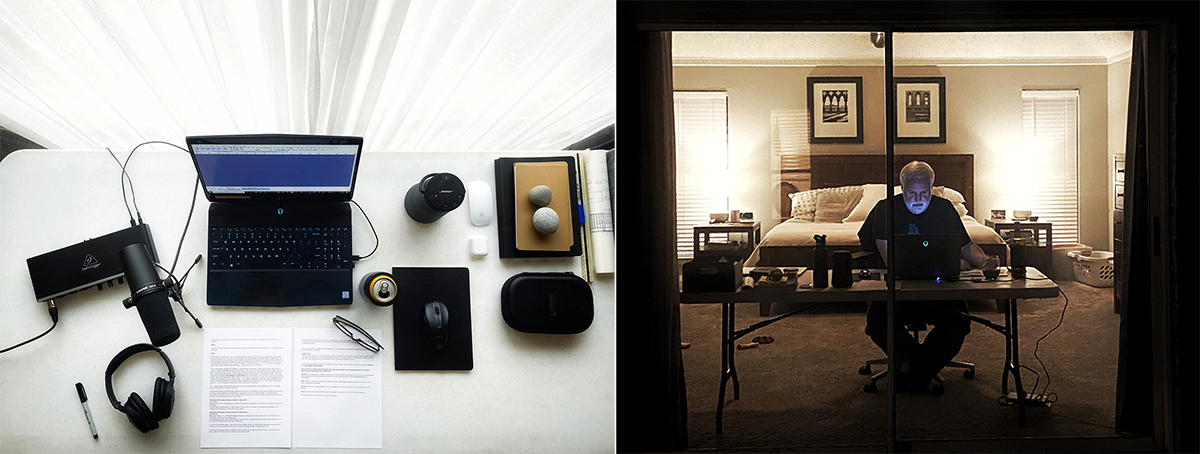An item of consideration that is becoming more prevalent in our conversations at the office is the introduction of a “Work from Home” (WFH) policy. To say that this is an important yet divisive topic would be an understatement. Regardless of where you fall on the spectrum of consideration, everyone recognizes it as something that needs to be addressed in some manner because the pandemic has created a situation where people now have some level of expectation to work remotely. This is a complicated topic – at least for me – because I struggle to figure out where I lie on the spectrum of solutions but let me put it out there as a precursor to the rest of this article.
I am in favor of a Work from Home policy that provides time out of the office to work.

There, I said it … but I still haven’t really committed to anything of substance yet. As with all things, I tend to process and work myself through problems by putting myself in the position to evaluate how different people (with their myriad of considerations) might feel about working from home and it starts with understanding my own circumstances. I don’t really like working from home but I like the ability to have the choice. The main reason I don’t like it might be surprising to some people … I work too much if I am at home.
I don’t sleep as much as I would like and my work schedule tends to reflect that fact. On a typical day, I would probably be at my desk by 7:15 AM and I wouldn’t leave for the day until after 6:30 PM. While I am not nose-to-my-desk working that entire time, it does indicate that I am not doing other things (like hobbies, working out, reading books, cooking – whatever), but there is a time frame in place. In this scenario, I don’t normally come home and continue working unless I absolutely have to do so. Now when I move my workday to my home office (we’ll get to the actual “home office” set up in a minute) I don’t have my workday bracketed by the act of driving to and from work, and as a result, I work way more than 12 hours. I wake up and I am at my desk within 15 minutes. I work until dinner, eat, and then find myself wandering back into the office for another hour or two because … why not? It’s just right there. Most people who are against a WFH policy believe that people will actually work less when they are at home, but that hasn’t been my experience.
So what is the downside?
Lack of Community
For a large percentage of our staff, collaboration is a key ingredient in producing our work. For those of us on the design side of things, there is a constant group examination of development and ideas, and the ability to present your work in person to have an unfettered dialog between collaborators is pretty crucial.
Motivation
It doesn’t take much to realize that working in your home while surrounded by all of your favorite things for someone to acknowledge that it might be hard to focus on the work. There is a mental connection in place when someone goes to work that actually identifies it as “work” which is distinctly different than “home”, the place identified with family, relaxation, sleep, etc. What this really means is that it requires an appropriate space dedicated to work and not you just sitting at the couch or at the kitchen table.
Unmonitored Performance
For less-experienced staff, this is a much larger consideration than what would be in play for people who have years of experience, particularly so if that experience is at the same firm. I know that for my team and the folks that work on my projects, I spend a considerable amount of time moving from desk to desk listening to progress, discussing their process, going over objectives, etc. all of which we are able to do over Microsoft Teams or GoTo meetings, but I have to concede that those conversations are far more beneficial if they take place face to face. The real consideration here is that the person who is missing out the most is the developing younger staff members – most likely the person who wants this work-from-home policy more vociferously than anyone else.
Burnout
I mentioned this above as consideration for myself – and the irony that it is Sunday morning and I am sitting at my desk at home writing this post is not lost on me. There are two major considerations for how burnout can occur (at least for my purposes here today). I spoke about work being so readily at hand that I find myself working even more when I don’t have that “start and finish” moment that occurs through the simple act of arriving, and leaving, the office for the day. The other burnout is that coming into the office offers a certain amount of social connection and distraction that can help break up the workday in a beneficial manner. I take part in a handful of design-related conversations each day on projects that I have no ownership of … and I find them rewarding and frequently help reset my mind so that when I return to my desk, I actually bring a renewed sense of optics to the task at hand.
Disproportionate Work/Life Balance
I really didn’t want to put this on my list because I am in no position to talk to anyone about work/life balance since I don’t have it myself, but how can you work on a WFH policy without thinking about it? All of the items immediately listed above contribute positively and negatively to finding balance. In working through that process, you might find yourself tilting disproportionately one way or the other. Eventually, I don’t think where you work really matters when dealing with whatever challenges you might face when seeking balance.

The Upside
Increased Productivity
There are plenty of stats available that suggest that people are generally more productive when working remotely than they are when in the office. The main reason always seems to focus on the time available to work that is not impacted by the preparation and travel time associated with going into the office. For some people, and I am referring to myself specifically, all that applies but I am also more willing to kill time by “squeezing in some work” in between my personal activities. I am just as likely to come into my office and work for a bit rather than channel surfing and then watching something that I don’t really care about watching.
No Office Distractions
What did you do this weekend? How’s your mom doing? Did little Jimmy win his baseball game this weekend? The opportunities for casual conversations are numerous when working in an office full of your friends. It’s certainly not a bad thing to engage with your coworkers – it can frequently help build relationships that make working together as a team easier and more effective. If I am working from home, in order for me to tell one of my amazing Leprechaun stories, I have to make a Herculean effort and actually set up a video call with someone … which I am most likely not going to do. As a result, I spend more time working and less time “Leprechauning” the people sitting around me.
Time Flexibility
Being able to work hours during your day that align with your needs is an obvious benefit. I’m not suggesting that people start working at 6:00 am and then take a 2-hour break around 9:00 am so they can watch a movie, but being able to take that 9:00 break to maybe go for a walk or a jog around the block has all sorts of benefits, both mentally and physically.
Increased Employee Satisfaction
Working a schedule that provides the flexibility to work in your pajamas, do some meaningful physical activities, or even work in a space that has the temperature set exactly where you want is going to make people happy, and happy workers unquestionably provide more valuable, not to mention that they tend to be more loyal and stay in their jobs longer with greater satisfaction.
Provides more Job Opportunities
This might actually be one of the biggest considerations on the list and if managed properly would be a benefit to both employer and employee. The ability to work remotely has no geographic limitations, which suggests that I can look for employees that meet my needs from just about anywhere … and the same holds true for the employee. While this is a big deal that presents so many opportunities, it doesn’t come without some serious considerations. In a firm like mine, we don’t have automatons doing work for us – some sort of personal engagement is required – the question of how much is what needs to be considered.
Additional Considerations
I’m not sure how much any of the following should come into consideration when developing a work-from-home philosophy but the actual environment where work is taking place at home certainly seems like a viable topic for discussion. I have spoken with some of my other “large” firm colleagues and many of them have told me that in order to get approval to work from home, you have to demonstrate that your work environment is suitable for the tasks you perform. In addition, many are telling me that the architectural firm is not providing all the tools that would be required to actually work from home, such as a second workstation, additional monitors, duplicate docking stations … a desk, etc. As a result, I think anyone considering WFH should be thinking about the following items:
Dedicated Space
Working while sitting on the couch or lying in bed doesn’t cut it. You need to get in the right frame of mind and the ability to move into a space whose sole purpose is to allow you to focus on the task at hand is a reasonable requirement. A space free from household distractions, such as roommates or family members, as well as a space that is suitable to have a “camera on” meeting should be expected.
WiFi availability
This is a tough one for some people – including myself. Part of working at home means that your engagement with colleagues and clients will be digital. If you have bandwidth issues with your WiFi, you might not be able to work viably from home. My wife has basically moved to a WFH situation permanently and on the days when everyone is in the house and we are all trying to host virtual meetings, our systems struggle to manage. I am actually in the process of installing Cat7 cabling so that I can hardwire in when I do work from home, but this isn’t an option that is available to everyone.
Necessary Equipment
This should also be a self-evident observation but I’m adding it as a major consideration. A handful of my friends who are not architects seem to need barely anything other than a laptop and they are good to go – rarely is this true for architects. Large monitors for drafting and a work surface (at least for me) large enough to accommodate drawings is a bare minimum. I also have a chair that I don’t mind sitting in for 12+ hours a day but during the start of the pandemic I sat in what essentially amounts to a mid-century modern dining room chair … that was rough after a week or two.
So What’s the Verdict?
So I stated at the beginning that I am in favor of a WFH policy – in fact, I don’t think business as usual is going to be good enough anymore. We are in the process of developing our own long-term policy and during the time we have been working through the nuances, I know of a handful of people who have left the firm. What we learned during their exit interviews is that the lack of a viable long-term WFH policy was a consideration for them. As we start to roll into Spring and 2022 architecture school graduates are starting to send in resumes and we conduct interviews, WFH is a topic that comes up in every single conversation. I know that there are people in my office that believe that in order to maintain our culture and to collaborate effectively as designers we need to have everyone in the office full-time, but there are endless polls and surveys that suggest that the benefits of an effective WFH policy far outweigh the current “business as usual” negatives.
- 83% of employees report they are more productive working from home
- The shift to remote working will make work more flexible, with 43% of CEOs saying they will grant employees flexible days going forward
- 47% of company leaders will allow employees to work from home full time after the pandemic
- 61% of business leaders have implemented more frequent manager-employee check-ins
- 81% of respondents in one study said they would be more loyal to their employer if they had flexible work options
- The number of employees working remotely prior to the pandemic was 30%, compared to 48% now
I also feel the need to say that if I had the option of working from home or coming into the office, I would almost always choose to come into the office – I just like it better. I feed off my coworker’s energy and I am a big believer that people who design for a living are better at that role when they are intellectually stimulated and challenged, something that is almost impossible to pull off when you are isolated and working in a vacuum.
If you have a take on working remotely or you are in the process of developing your own WFH policy, I invite you to leave your thoughts and considerations in the comment section below.

If you would like to read more statistics on the subject, here is a short survey-based article: Remote Working Statistics You Need to Know


